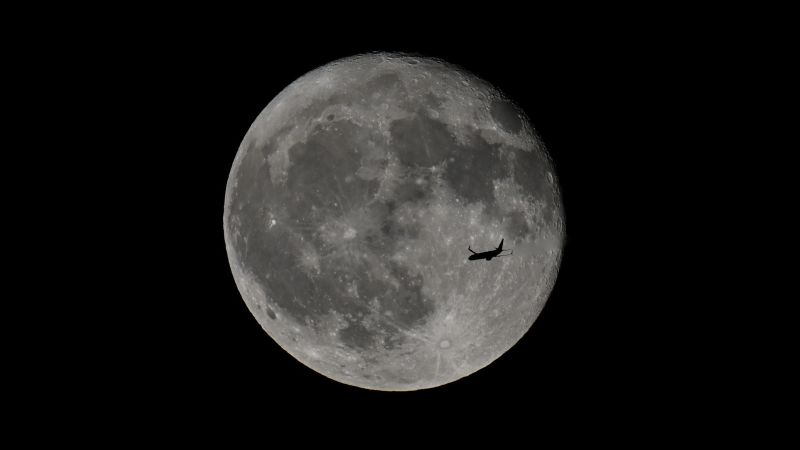The upcoming full moon in June, affectionately known as the strawberry moon, is set to illuminate the night sky on Tuesday night and Wednesday morning. This lunar event will reach its peak fullness at 3:44 a.m. ET on Wednesday, though it will already appear bright and low towards the east after sunset on Tuesday and low in the western sky at sunrise on Wednesday, as reported by EarthSky.
Notably, this month also marks the summer solstice on June 20, when the sun is positioned higher in the sky, causing the moon to look closer to the horizon due to their opposing positions on Earth. However, this strawberry moon will also be the lowest full moon observable from the Northern Hemisphere in decades, a phenomenon linked to a major lunar standstill. This standstill happens when the moon reaches its northernmost or southernmost point in its orbit, a gradual process affected by the sun’s gravitational pull over an 18.6-year cycle. According to the Griffith Observatory, it is called a standstill because it appears as though the moon is no longer changing direction, despite its ongoing orbit.
While this standstill first occurred in January, it continues to influence the appearance of the full moon, EarthSky indicates. The last notable lunar standstill took place in 2006. For viewers in the Southern Hemisphere, however, this same event will see the full moon at its highest point in the sky.
The name ‘strawberry moon’ derives from indigenous tribes who associated the full moon with the peak ripening of berries, including strawberries, during this time of year. The Anishinaabe and Sioux tribes refer to it as the strawberry moon, while the Creeks call it the blackberry moon, and the Shawnee tribe knows it as the raspberry moon.
Additionally, the strawberry moon will be flanked by the vibrant core of the Milky Way, visible from June through August during what NASA dubs “Core Season.” This phase allows observers to see the galaxy’s bright center, which looks like a faint, hazy band arcing across the sky, best appreciated away from city lights. Long-exposure photography can enhance its visibility.
In June, stargazers can also expect to see multiple planets aligning. Mars, Jupiter, and Mercury will be readily visible in the western sky after sunset. Early risers will spot bright Venus low in the eastern sky for about two hours before sunrise throughout the month. Notably, on June 22, the crescent moon will appear in close proximity to Venus in the morning sky.
Looking ahead, the Farmers’ Almanac notes that six more full moons are on the horizon for 2025, including notable supermoons in October, November, and December. The remaining full moons of 2025 are as follows:
– July 10: Buck moon
– August 9: Sturgeon moon
– September 7: Corn moon
– October 6: Harvest moon
– November 5: Beaver moon
– December 4: Cold moon
As we transition into fall, two significant eclipse events are scheduled to occur. A total lunar eclipse will be prominently visible from Europe, Africa, Asia, Australia, parts of eastern South America, Alaska, and Antarctica on September 7 and 8, according to Time and Date. This event, which occurs when Earth lies directly between the sun and the moon, causes the moon to take on a reddish hue when it enters Earth’s darkest shadow, known as the umbra, earning the dramatic nickname “blood moon.”
In addition, a partial solar eclipse will take place on September 21 as the moon partially obscures the sun, creating a crescent effect. This eclipse will be observable in remote areas of Australia, Antarctica, and the Pacific Ocean, as noted by NASA.

